A Lighting Installation for Natural Areas
This proposal envisions to create a kinetic lighting element, to manage and minimize light pollution. It is imagined to be placed within the urban fabric in parks, or in natural suburban areas. The prototype’s design is based on the “Spider-LED Kit”, a box that can be mounted on a tree’s branch, which protects the equipment (LED, Stepper Motor) from environmental conditions. The multiple “Spider-LED Kits” placed in one area contribute to the creation of a spatial experience, where light sources with different brightness move vertically -like fireflies- in the setting.
The “Spider-LED Kit” gets triggered by sensing a moving Subject (human or non-human). By defining the distance between subject and kit, the brightness of the LED differs. The closer the subject gets to the kit, the brighter the light. In parallel, the stepper motor is activated and starts revealing the LED, by vertically moving it towards the ground. If the subject moves away from the kit, the LED turns off and the Stepper Motor pulls it back up in the kit. There is an analogy between the stepper motor’s movement in both directions, meaning it performs the same amount of revolutions within a loop. However, if a subject decides to stand close to the kit for a longer period of time, there is a limit of the maximum amount of revolutions that the stepper motor can perform, in order for the LED not to hit the ground. A second sensing parameter is introduced with a water level sensor, placed on the root of each tree. When it senses a rise of the water level -most probably occurring due to rain-, it blocks the stepper motor, and only allows the LED to function. This way it is ensured that the LED stays protected in the kit .
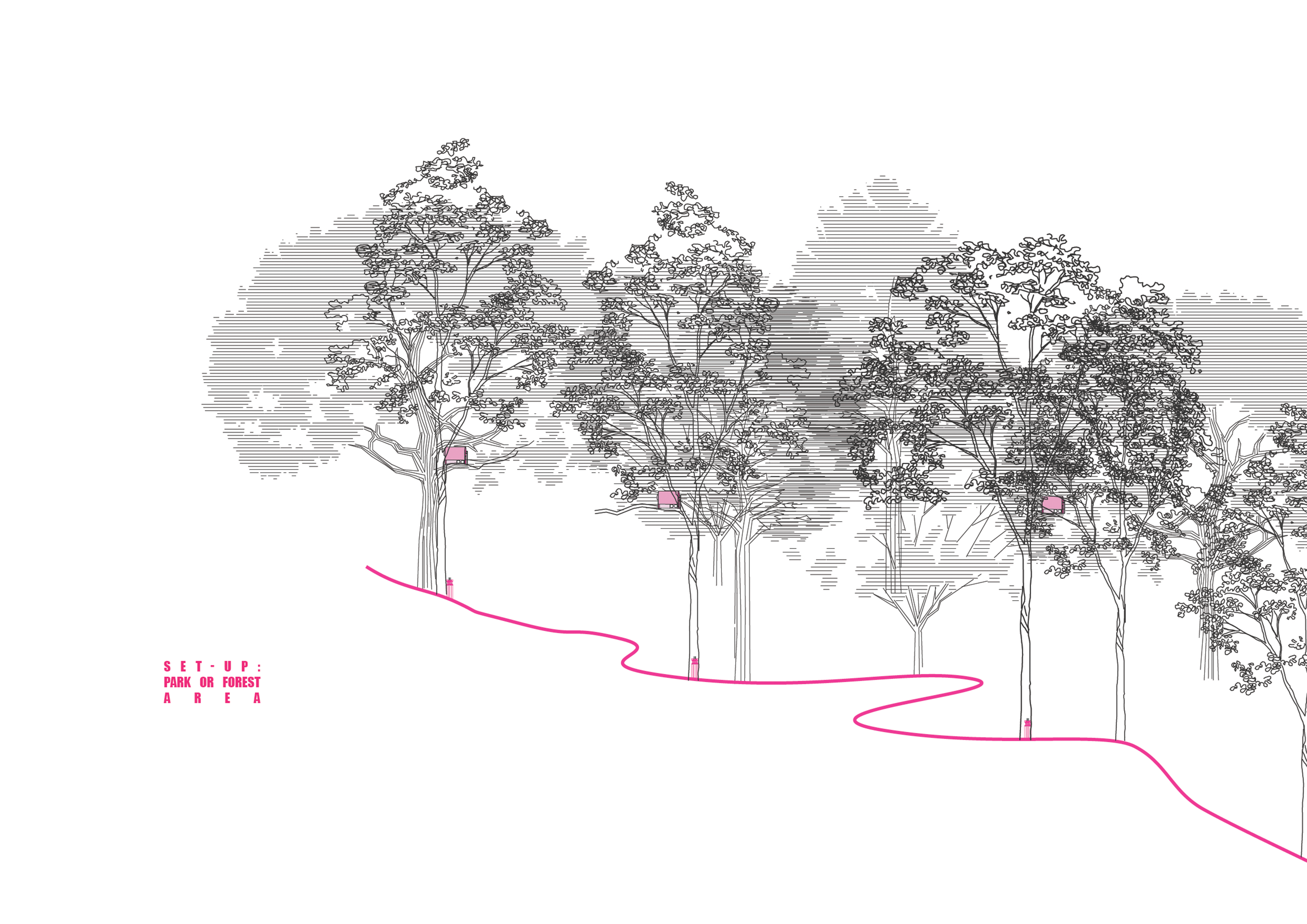
CONCEPT DIAGRAM
Using the ELEGOO Arduino Kit, the following equipment is selected to build a prototype of the “Spider-LED”
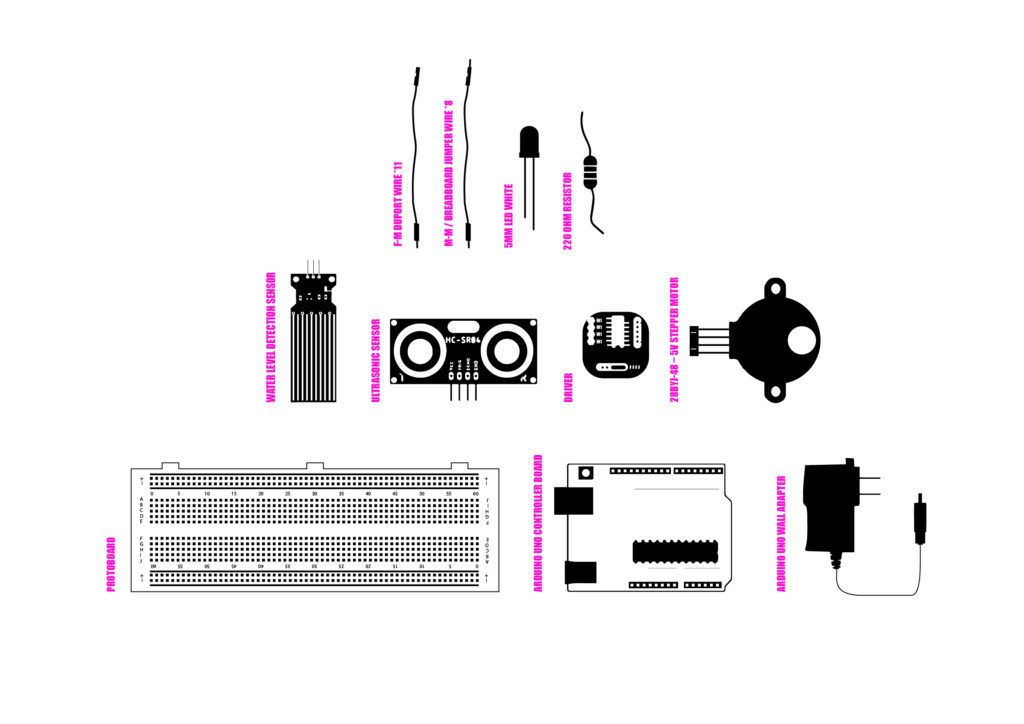
BOM – Bill of Material
To increase the power, an additional electricity supply is connected to the Arduino Uno Controller Board
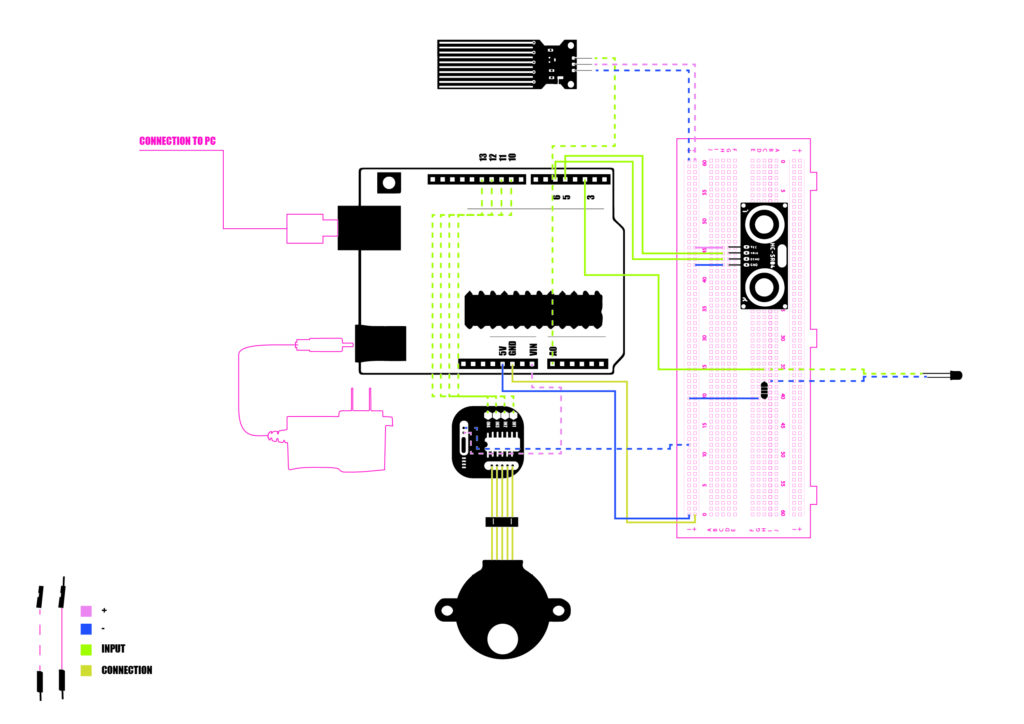
SCHEMATIC DIAGRAM
A prototype of the “Spider-LED Kit” that mechanically enables the subject sensing and LED movement is designed as bellow. The prototype is fabricated by using a 3mm acrylic material
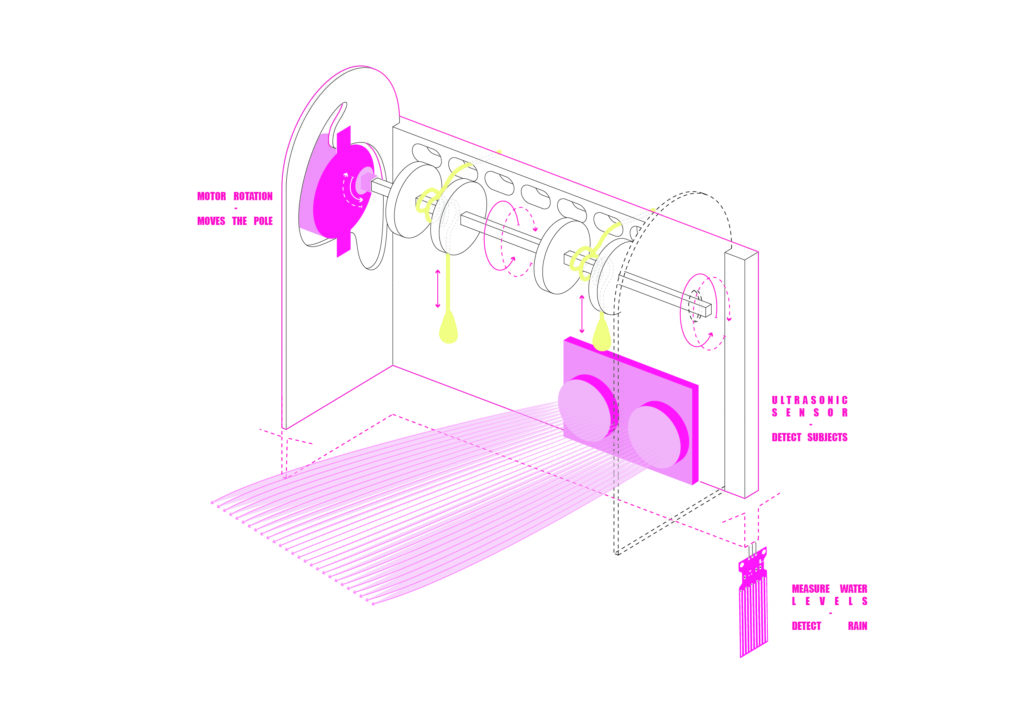
PROTOTYPE
The Code is evolving within two loops, determining the subject’s distance and checking whether “rain “it rains”
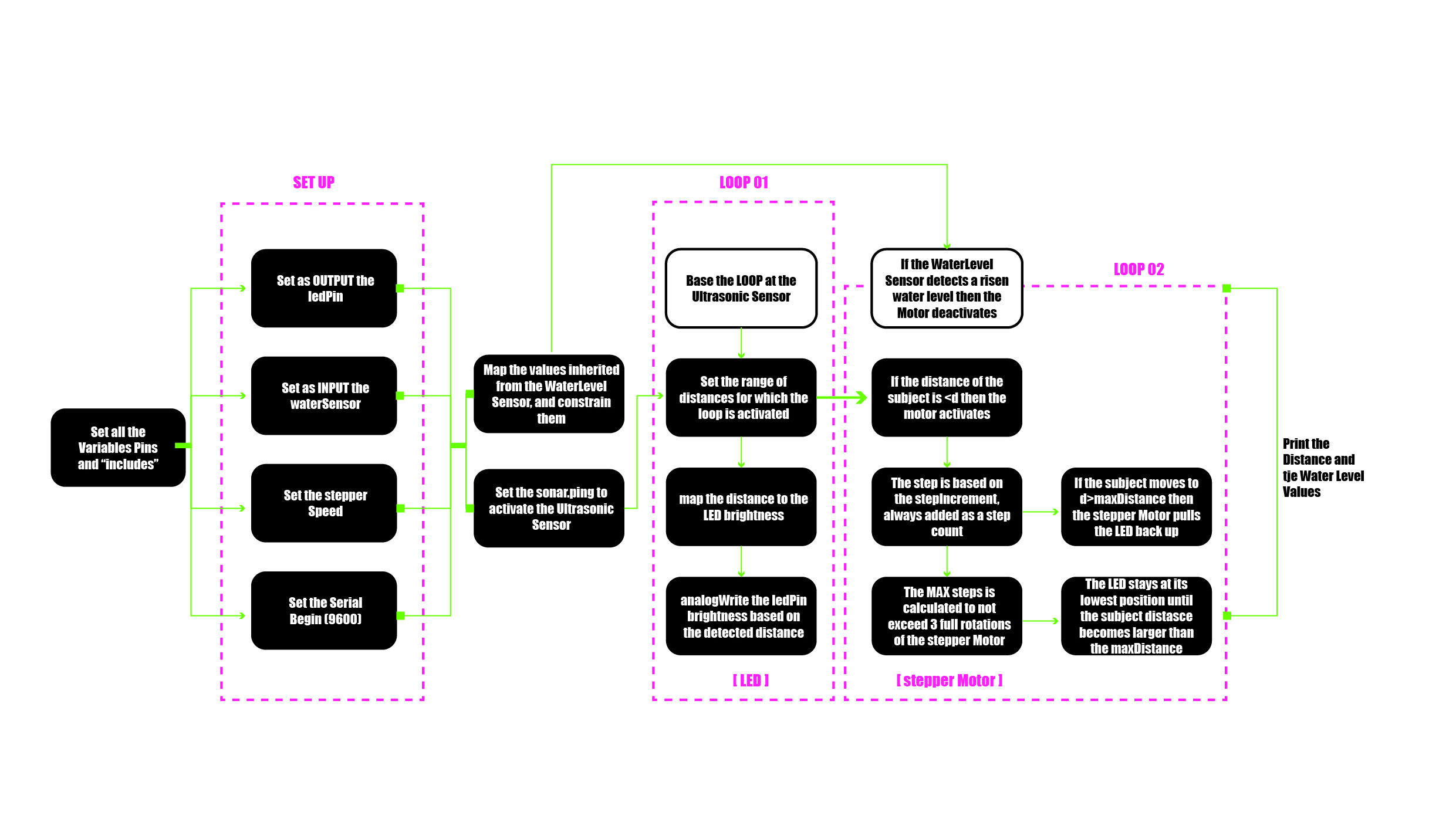
CODE DIAGRAM
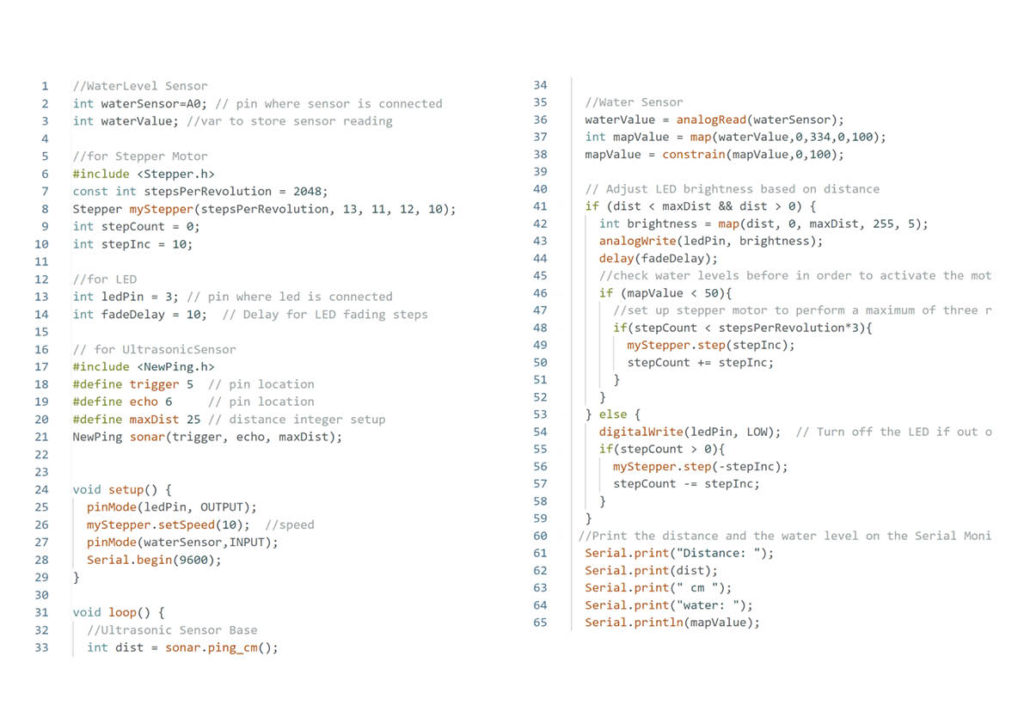
CODE TEXT
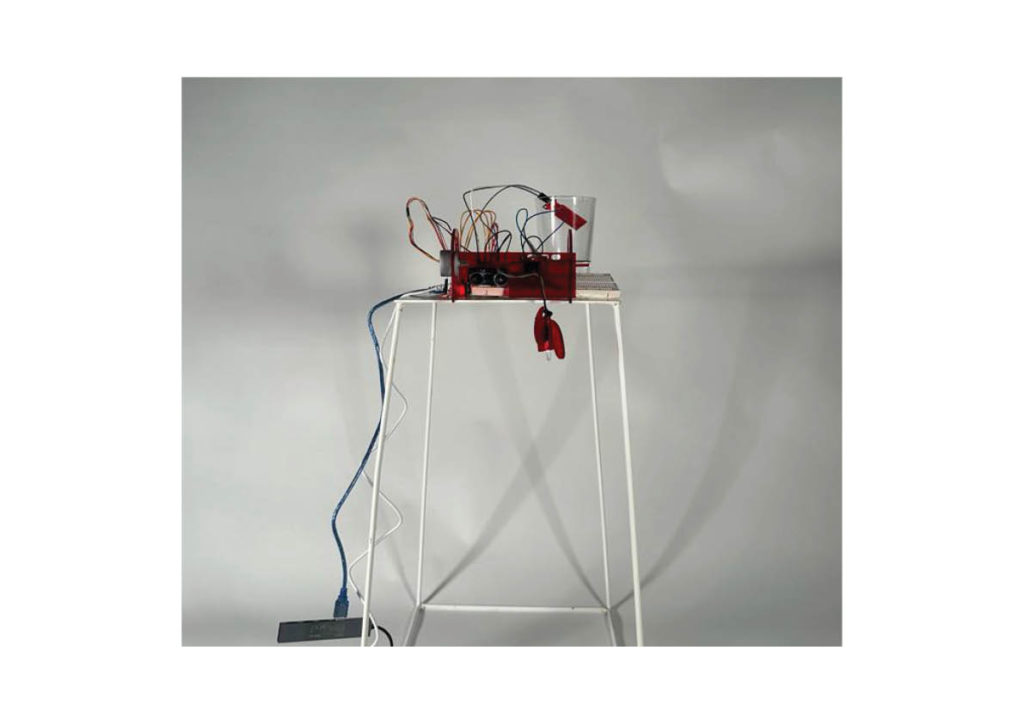
GENERAL IMAGE
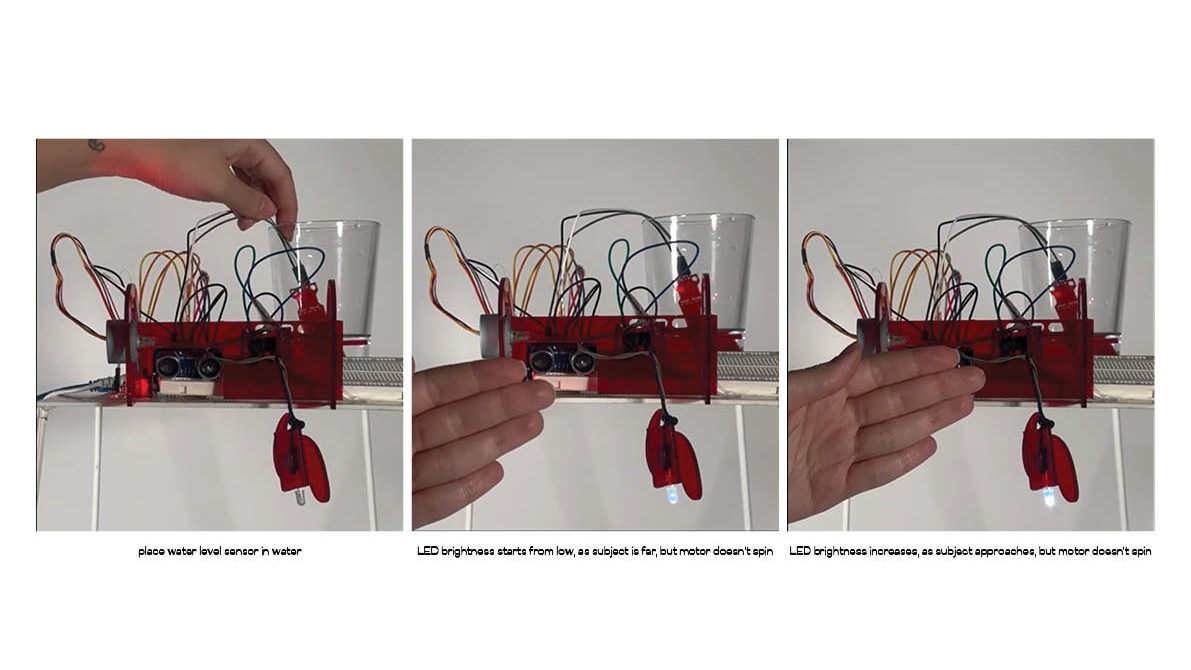
RAIN DETECTION- WATER LEVEL SENSOR
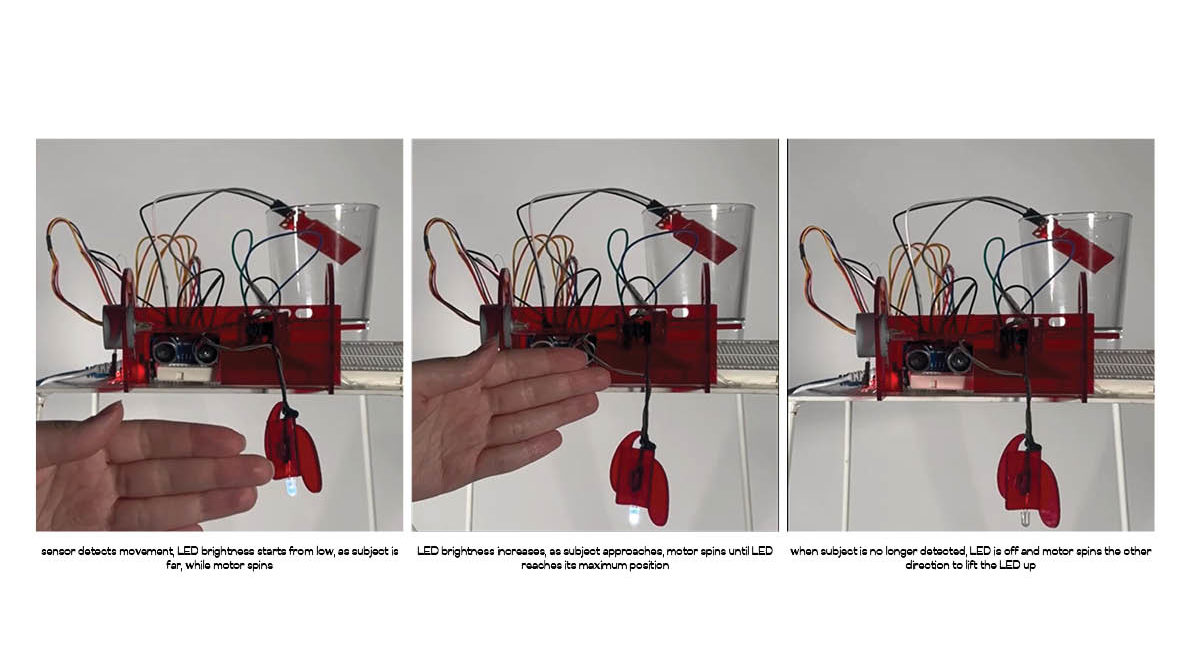
NO RAIN DETECTION – MOTOR FUNCTION
VIDEO
So what can happen next…
This endeavor focuses on reducing light pollution in the sites where it is places. It also creates an experience for the user as if it was an art-installation. A next step would focus on populating the LED lights in the site, to visualize how the chaos of these moving elements can create a three dimensional wave in space where the user performs as an actor, and becomes part of the installation

